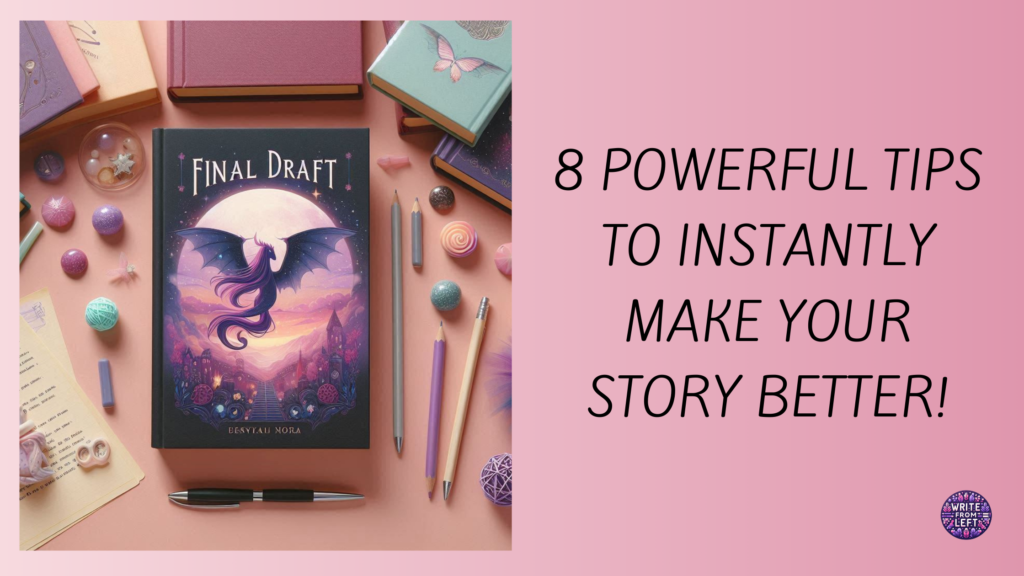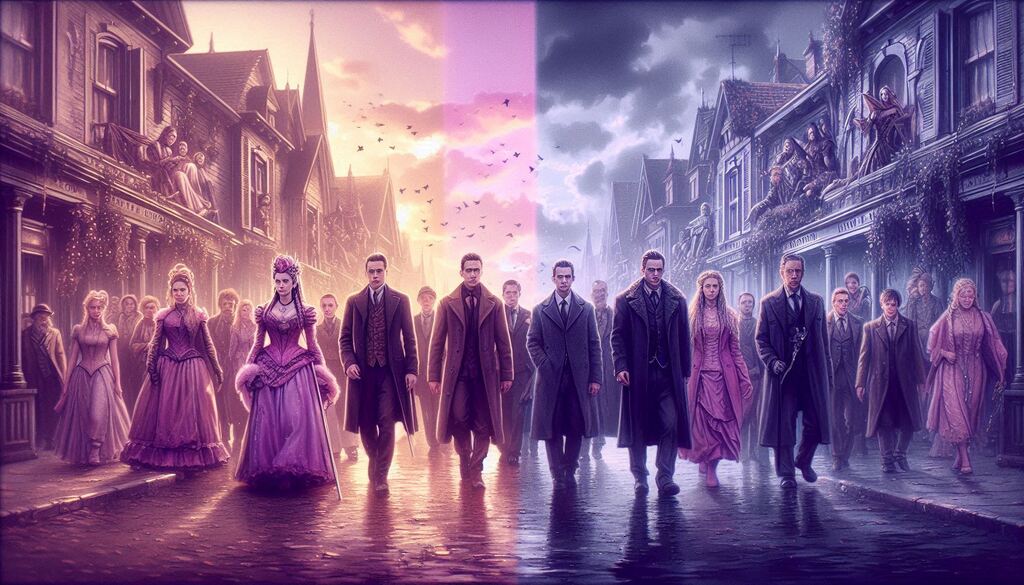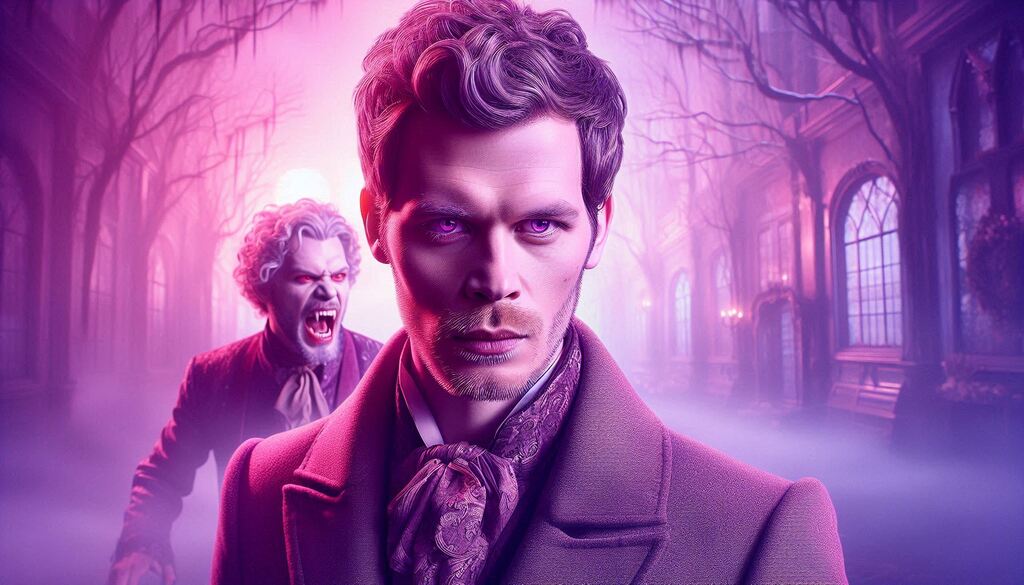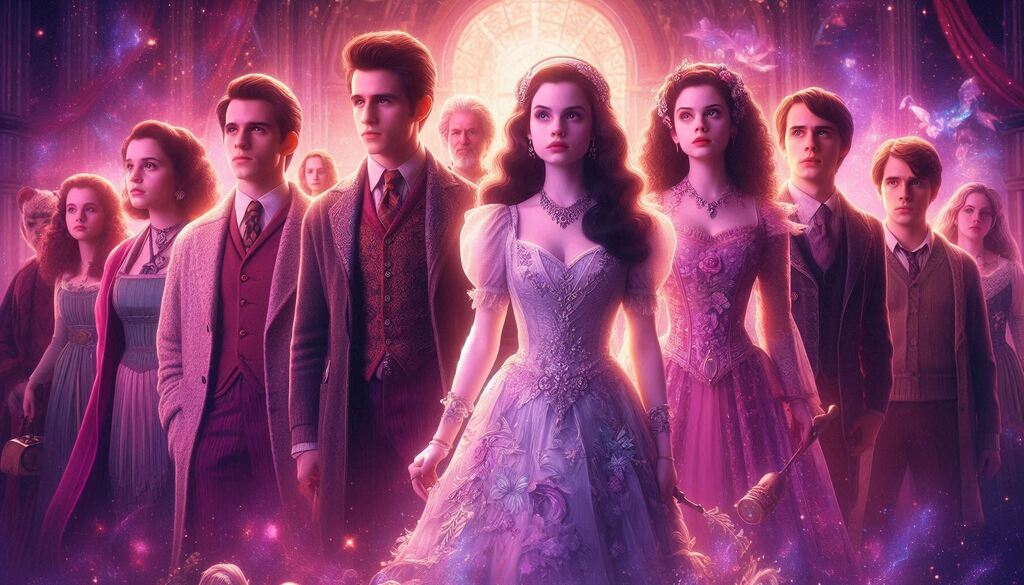
Writing a story or a great piece of fiction is the dream of many aspiring authors. It can be complicated when you realize it’s not just your protagonist who needs attention. Often, they are perfectly curated, while the other characters are practically ignored, much like we often overlook people in real life. To create a story that feels real and engaging, you need to see things from other characters’ perspectives. Let’s dive into how this approach can elevate your storytelling.

Let Your Characters Breathe
Often, we writers get caught up in the protagonist’s journey. But what about the supporting cast? Think of your story as a party. If the protagonist is the host, the guests (other characters) bring their unique vibes, making the party lively and memorable.
For instance, in *The Vampire Diaries*, characters like Damon Salvatore and Caroline Forbes often steal the spotlight. Their complex personalities and unique perspectives add layers to the narrative, making the story richer and more engaging.

Knowing the Story’s Pace
When it comes to writing a story, pacing is crucial. You can’t write a long, drawn-out scene to explain one incident, even if it’s crucial. Even if characters are kissing for the first time, you can’t slow the pace too much. Let your characters breathe, and remember, they aren’t there just to follow a motive.
For example, if your story is about a murder and your protagonist’s life depends on finding the killer, it doesn’t mean they can’t have a romantic life on the side or hobbies that make them emotional. Your characters don’t exist just for the sake of existing; they have other sides to them. A singer in your story isn’t singing all the time—they have other struggles, like a fight with a friend or romantic issues. This gives them the depth you need.

Embracing Imperfection: Why Readers Love Flawed Characters
Readers love imperfect characters because they see a reflection of themselves in them. Perfect characters are boring; they don’t feel real. We all have flaws, and seeing these imperfections in characters makes them relatable.
A study by Jennifer Aaker, a psychologist at Stanford, found that people are more likely to connect with characters who show vulnerability and imperfection. This is because such characters make readers feel they are not alone in their struggles.
It’s quite obvious that nobody is perfect. When it comes to reading stories, we love them because we can relate. For example, in *Lucifer*, Lucifer Morningstar’s struggle with his identity and emotions makes him relatable despite his supernatural traits. It’s soothing to see characters struggling just like we do in real life.
“Relatability is the essence of storytelling.”
Khushboo Sangwan

The Magic of Different Perspectives
Switching perspectives can do wonders for your story. Imagine you’re writing a mystery. Instead of just following the detective, dive into the mind of the suspect. Why do they act the way they do? What drives them?
In *Never Have I Ever*, the narrative shifts between characters like Devi and her friends, providing a multifaceted view of events. This not only builds suspense but also gives each character depth and a unique voice.
Yes, you have a main character, but other characters shouldn’t just exist for the plot. They have their own motivations and aspirations. Even subtle changes can add depth. For example, a school bully might be insecure due to past bullying. A shopkeeper might have dreamt of being a singer and still has a guitar hidden under the counter. These details make characters real and relatable.
Remember the show Hannah Montana? You don’t just remember Miley, right? Lilly and Oliver had their own dreams and challenges, making the story more engaging. That’s what you should aim for.

The Importance of a Well-Rounded Antagonist
A story is only as strong as its antagonist. A well-rounded villain can make your story compelling and realistic. Think of Klaus Mikaelson from The Originals. He’s not just evil for the sake of being evil; he has a twisted but understandable motivation, which makes him a more engaging and formidable opponent.
Villains are often shaped by their past experiences. To create a compelling antagonist, delve into their backstory. Why do they oppose the protagonist? What are their fears and desires? This approach can transform a one-dimensional villain into a memorable character.
Tip: Villains aren’t born; they’re created. To make your story more interesting, step into the mind of your villain. Understand their motivations and perspective. Just like in real life, everyone has reasons for their actions. Your villain believes they are doing the right thing, driven by their own experiences and mindset.

Balancing Your Narrative
Focusing too much on the protagonist can lead to a lopsided story. If your main character hogs the spotlight, other characters might come off as flat and unimportant. This can disengage your readers.
Look at *Wizards of Waverly Place*. Characters like Alex Russo’s siblings, Justin and Max, have their own stories and development arcs, which complement Alex’s journey and enrich the overall narrative. Their personal growth and challenges make the story more dynamic and relatable.
This is one of the main mistakes beginner writers make. They focus too much on the main character and forget that other characters exist independently. Gone are the days when the main character was the only one that mattered. Today, audiences want to know about the aspirations, relationships, and struggles of all characters.
By the way, if you’re looking for some writer’s essentials, you can check this post: Writers: You Need These 5 Products For Creativity

Practical Exercises to Enhance Character Depth
Here’s a practical tip: write a scene from another character’s perspective. This exercise can provide fresh insights into their thoughts and motivations. Even if you don’t include this version in your final draft, it will help you understand your characters better.
Another approach is to create detailed backstories for each character. Outline their past experiences, fears, and desires. These details might not all make it into the story, but they will inform how your characters react and interact. This makes readers more interested in the story.

Creating Compelling Character Arcs
A character arc shows growth and transformation. Compare Damon Salvatore from The Vampire Diaries with a static character like some traditional heroes. Damon’s journey from a villain to a complex, redeemed character is compelling because it’s driven by his circumstances and choices.
Change is inevitable. You are no longer the person you were four years ago, and that’s okay because you have evolved. Your characters do the same. Let them fall, realize their mistakes, and rise again. Let them struggle with self-doubt, heartbreak, and other challenges. Characters who grow and learn from their experiences keep readers engaged.

Final Thoughts
By stepping into the shoes of your characters, you can create a more engaging and relatable story. This approach helps you develop well-rounded characters with depth and authenticity.
Life is interesting because of its ups and downs. To make your story engaging, ensure your characters live lives worth living. They exist in your story not because you created them, but because they have their own stories to tell, and you are just narrating them.
Thank you so much for reading. I suggest you should read this blog next: Making Time for What You Love: Writing Tips for Busy Lives
You can follow me on Instagram on @khushbookshelf for more updates. I’ll see you in the next one
Cheers!
Eu amei o quanto você será realizado aqui O esboço é de bom gosto, seu assunto de autoria é elegante, mas você fica nervoso por querer entregar o seguinte mal, inquestionavelmente, vá mais longe anteriormente, exatamente o mesmo quase muitas vezes dentro caso você proteja esta caminhada
Business dicker Hi there to all, for the reason that I am genuinely keen of reading this website’s post to be updated on a regular basis. It carries pleasant stuff.
Real Estate very informative articles or reviews at this time.
Techno rozen I’m often to blogging and i really appreciate your content. The article has actually peaks my interest. I’m going to bookmark your web site and maintain checking for brand spanking new information.